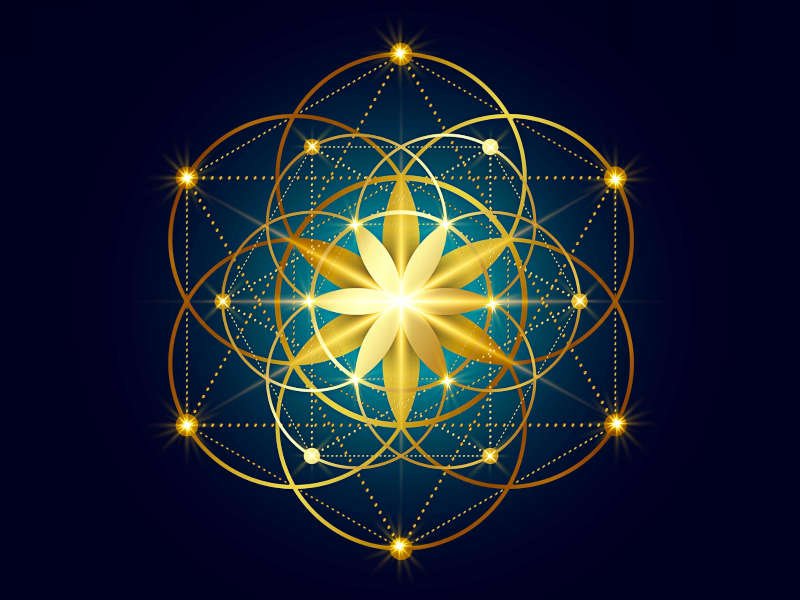
The Wisdom of Sacred Geometry: Unlocking the Secrets of the Universe
Sacred geometry, an ancient and enigmatic concept, holds the keys to understanding the deepest mysteries of the cosmos.
Since time immemorial, these geometric patterns and shapes have adorned temples, monuments, and sacred texts, serving as a testament to the inherent wisdom that lies within the fabric of creation.
Exploring the intricate language of sacred geometry, we embark on a journey that transcends the boundaries of the physical realm and delves into the metaphysical underpinnings of existence.
At the heart of sacred geometry lies the principle that the universe itself is a symphony of harmonious design, a celestial tapestry woven together by the threads of divine intelligence.
Unlocking the secrets of these timeless patterns, allows us to not only gain insight into the very essence of creation but also awaken to our own innate potential as co-creators of reality.
In this journey towards self-discovery and cosmic understanding, sacred geometry serves as a bridge between the seen and the unseen, inviting us to embrace the boundless potential that lies within and beyond the world of form.
Ready to Deepen Your Journey?
Access exclusive content guiding self-discovery, transformation & growth. Embrace authenticity as we explore consciousness, spirituality & well-being.
Join the Wholebeing Newsletter Today!
By signing up, you agree to receive our well-being emails, special offers, and agree to our Privacy Policy. You can unsubscribe at any time.
The History of Sacred Geometry
Ancient Civilizations’ Understanding of Sacred Geometry
The origins of sacred geometry can be traced back to the dawn of human consciousness when our ancestors first gazed upon the cosmos and marveled at the intricate patterns that governed the heavens.
They recognized the divine blueprint in the stars, seeking to understand the cosmic order that breathed life into the universe.
This ancient wisdom was passed down through the ages, shaping the cultural, spiritual, and intellectual landscapes of civilizations across the globe.
From the breathtaking pyramids of Egypt to the mystical temples of India, ancient civilizations revered the principles of sacred geometry, intuitively recognizing the profound interconnectedness of all things.
These master builders, astronomers, and philosophers sought to encapsulate the cosmic harmony in their sacred monuments, aligning them with celestial bodies and embedding mathematical precision within their intricate designs.
As these sacred structures emerged from the earth, they served as a testament to humanity’s eternal quest for truth, wisdom, and understanding.
Through the ages, the wisdom of sacred geometry has been preserved and expanded upon by visionary thinkers such as Pythagoras, Plato, and Leonardo da Vinci, who recognized the inherent beauty and order that lay at the heart of existence.
They endeavored to unlock the secrets of the universe, guided by the celestial blueprint that had captivated the minds of mystics and scholars since the beginning of time.
As we delve into the rich history of sacred geometry, we discover a timeless wisdom that transcends the boundaries of culture, religion, and era, inviting us to embrace the universal language of creation that speaks to the very essence of our being.
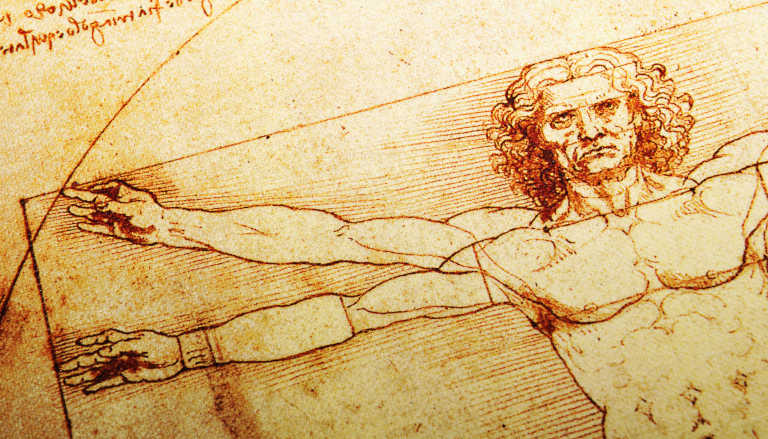
Key Historical Figures & Their Contributions
Throughout history, numerous luminaries have emerged to contribute their unique insights and understanding to the study of sacred geometry.
These visionary minds have left an indelible imprint on the collective consciousness, guiding us towards a deeper appreciation of the divine patterns that govern the cosmos.
Pythagoras, the ancient Greek philosopher and mathematician, stands out as one of the most influential figures in the field of sacred geometry.
His understanding of the mystical significance of numbers and their relationship to harmonious patterns led him to uncover the sacred ratios and geometric principles that pervade the natural world.
The famed Pythagorean theorem and the discovery of the musical harmony found in the “Music of the Spheres” stand as testament to his lasting impact on the study of sacred geometry.
Plato, another towering figure in the annals of sacred geometry, built upon the foundation laid by his predecessors, delving deeper into the metaphysical implications of these divine patterns.
He postulated the existence of the Platonic solids, a set of five three-dimensional shapes that he believed represented the building blocks of the universe.
These timeless forms continue to inspire philosophers, mathematicians, and spiritual seekers alike, as we strive to comprehend the deeper order that underlies all of creation.
Leonardo da Vinci, the unparalleled polymath of the Renaissance, was profoundly influenced by the principles of sacred geometry.
His fascination with the divine proportions led him to study the human body, the natural world, and the cosmos in search of the sacred patterns that governed all things.
His iconic works, such as the Vitruvian Man and the Last Supper, embody the essence of sacred geometry, reflecting his belief in the interconnectedness of art, science, and spirituality.
As we honor the contributions of these trailblazing figures, we are reminded that the wisdom of sacred geometry is a living legacy, one that continues to inspire and enlighten those endeavoring to comprehend the vast wonders of existence.
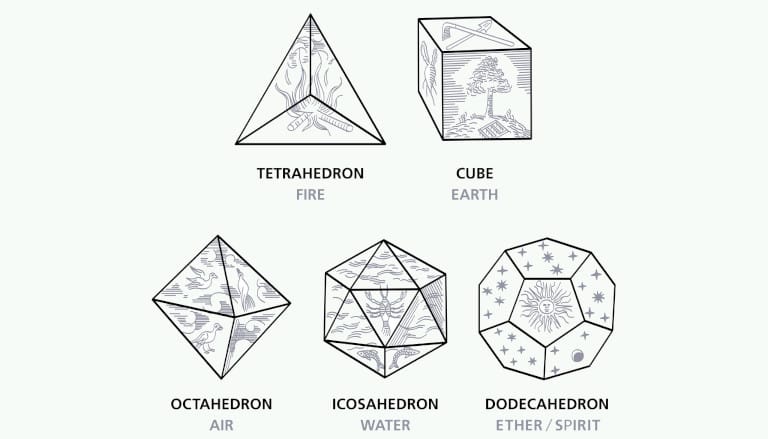
The Basic Elements of Sacred Geometry
The Platonic Solids
Among the most revered elements of sacred geometry are the Platonic solids (pictured above), a collection of five three-dimensional shapes that embody the essence of cosmic harmony.
These remarkable forms, named after the ancient Greek philosopher Plato, are distinguished by their unique characteristics: each solid is composed of congruent faces, with the same number of identical polygons meeting at each vertex.
Tetrahedron – Representing the element of fire, the tetrahedron is composed of four equilateral triangles and symbolizes the transformative power of change, growth, and spiritual ascension.
Hexahedron (Cube) – Associated with the element of earth, the hexahedron is formed by six equal squares, signifying stability, grounding, and the solid foundation upon which our reality rests.
Octahedron – Linked to the element of air, the octahedron consists of eight equilateral triangles and embodies the qualities of balance, communication, and the harmonious flow of energy.
Dodecahedron – Connected to the element of ether or spirit, the dodecahedron is composed of twelve regular pentagons, representing the unseen forces that pervade the cosmos and the divine blueprint that unifies all of creation.
Icosahedron – Representing the element of water, the icosahedron is formed by twenty equilateral triangles, symbolizing the fluidity, adaptability, and emotional depth that characterize our ever-evolving journey through life.
These five Platonic solids serve as the building blocks of the universe, embodying the sacred patterns that underpin the fabric of existence and offering profound insights into the intrinsic harmony that governs the cosmos.
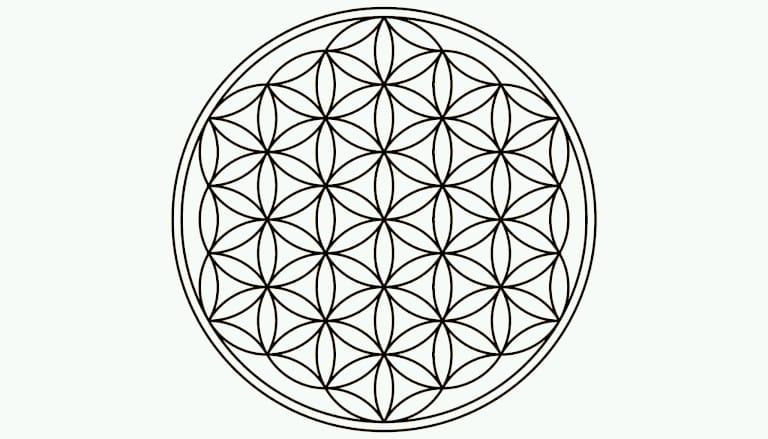
The Flower of Life
The Flower of Life, an exquisite symbol revered in sacred geometry, represents the interconnectedness and unity of all creation.
This mesmerizing pattern consists of overlapping circles that form a series of perfectly symmetrical, interlaced petals, evoking the image of a blossoming flower.
At the heart of this divine emblem lies a profound truth: the universe itself is an intricate dance of interwoven energies, bound together by the invisible threads of love, harmony, and unity.
Traced back to ancient civilizations across the globe, the Flower of Life has adorned the walls of sacred temples, the pages of illuminated manuscripts, and the hearts of countless spiritual seekers throughout history.
Its timeless wisdom whispers to us a cosmic message, urging us to recognize the divinity that lies within and around us, and to embrace the unity that transcends the boundaries of time, space, and form.
Attuning ourselves to the harmonious vibrations of this sacred symbol opens us to the boundless love and wisdom that permeates the cosmos, and awakens us to the divine potential that resides within our very souls.
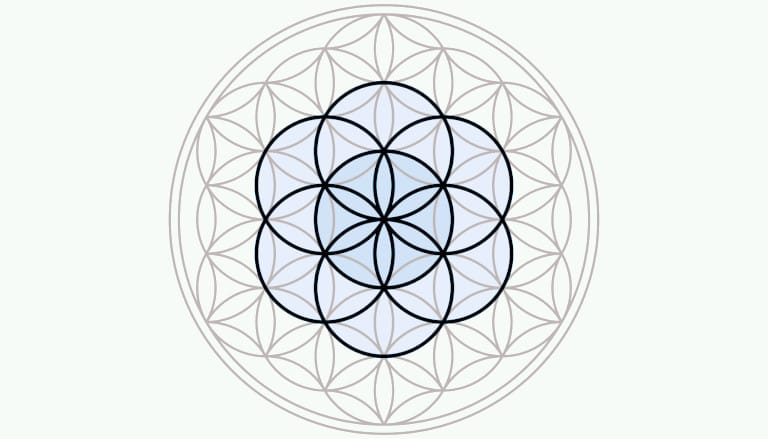
The Seed of Life
The Seed of Life, another captivating symbol in the realm of sacred geometry, represents the very essence of creation and the birth of consciousness.
This enchanting design is composed of seven overlapping circles, forming a pattern of interlaced vesica piscis – the almond-shaped spaces where circles intersect – that resembles a blossoming flower bud.
The Seed of Life serves as a potent reminder of the divine spark that ignites the process of creation, unfolding into the intricate tapestry of life that fills the cosmos.
The number seven, central to the Seed of Life, holds deep spiritual significance across myriad cultures and spiritual traditions.
From the seven days of creation in the Judeo-Christian tradition to the seven chakras in Hinduism and Buddhism, the number seven symbolizes the cycles of transformation, renewal, and spiritual growth that characterize our journey through existence.
Aligning to the wisdom of this sacred symbol, we embrace our role as co-creators of our reality, rekindling the internal creative power within us.

The Golden Ratio & The Fibonacci Sequence
The Golden Ratio, often denoted by the Greek letter phi (φ), is a mathematical constant that has captivated the hearts and minds of scholars, artists, and spiritual seekers throughout history.
This divine proportion, approximately equal to 1.618, represents the harmonious relationship between two quantities, where the ratio of the larger quantity to the smaller one is the same as the ratio of their sum to the larger quantity.
Intimately connected to this divine proportion is the Fibonacci sequence, a series of numbers in which each successive term is the sum of the two preceding ones.
Beginning with 0 and 1, the sequence unfolds as 0, 1, 1, 2, 3, 5, 8, 13, 21, and so on.
As this sequence progresses, the ratio between consecutive numbers increasingly approaches the Golden Ratio, revealing the profound mathematical harmony that underlies creation.
These intertwined mathematical marvels can be observed throughout the natural world.
From the elegant spirals of seashells and the graceful curve of a nautilus shell to the intricate patterns of galaxies and the spiraling petals of a sunflower, these divine proportions serve as a testament to the intrinsic beauty and order that fills the universe.
In the realm of art and architecture, these sacred ratios have inspired countless masterpieces.
The Parthenon, Leonardo da Vinci’s Last Supper, and the Great Pyramid of Giza all embody these harmonious proportions, reflecting humanity’s timeless quest to capture and express the divine order that connects all things.
Together, the Golden Ratio and Fibonacci sequence whisper to us a sacred truth: the cosmos itself is a symphony of interconnected energies, bound together by the invisible threads of love, unity, and harmony.
They serve as guiding stars in our voyage of transformation and growth, illuminating our understanding of universal principles and revealing the hidden harmony that underlies the fabric of existence.

Sacred Geometry in Nature
The wisdom of sacred geometry extends far beyond the realm of human creation, permeating the very essence of the natural world.
From the microcosm to the macrocosm, the sacred patterns that underlie the fabric of existence can be observed in countless forms, revealing the divine intelligence that shapes and sustains all of creation.
Flowers – The mesmerizing arrangement of petals in flowers, such as sunflowers and roses, often follows the Fibonacci sequence, embodying the harmonious principles that govern the cosmos.
Shells – The graceful spirals of seashells, such as the nautilus, embody the Golden Ratio, echoing the divine proportion that unifies all aspects of creation.
Galaxies – The intricate patterns of galaxies, with their swirling arms and spiraling cores, reflect the sacred geometry that pervades the cosmos, serving as a testament to the interconnectedness and unity of all existence.
Crystals – The intricate lattice structures of crystals, such as quartz or pyrite, reveal underlying geometric patterns, demonstrating the orderliness and precision of molecular arrangements.
Honeycombs – The hexagonal design of honeycombs made by bees is a perfect example of geometric efficiency in nature, as it allows for the maximum amount of storage with the least amount of material.
The presence of sacred geometry in nature holds profound significance, as it serves as a reminder of the divine forces that orchestrate the dance of creation.
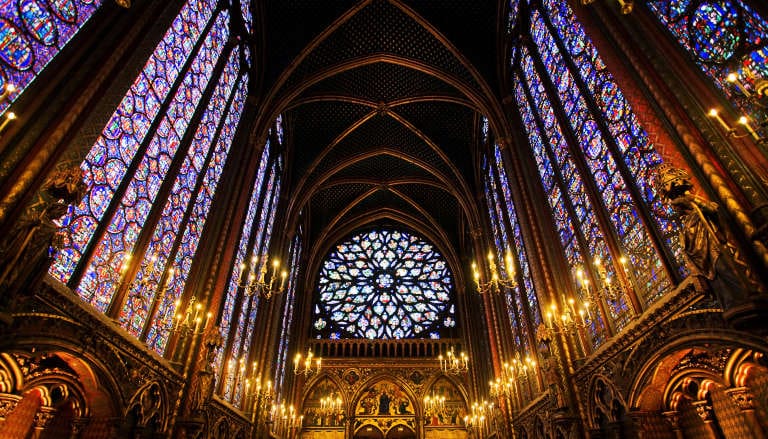
Sacred Geometry in Art & Architecture
Sacred Geometry in Art Throughout History
The timeless wisdom of sacred geometry has captivated the hearts and minds of artists throughout history, serving as an inexhaustible source of inspiration and a bridge between the material and spiritual realms.
By incorporating the divine patterns of sacred geometry into their masterpieces, these artists have sought to express the ineffable mysteries of existence and to connect with the universal forces that shape our reality.
Ancient Egyptian Art – The exquisite murals and intricate designs found within Egyptian temples and tombs often embody the principles of sacred geometry, reflecting the civilization’s deep reverence for the divine order that governs the cosmos.
Buddhist Mandalas – The mesmerizing patterns and intricate details of mandalas, which serve as spiritual tools for meditation and self-discovery, embody the wisdom of sacred geometry, symbolizing the unity and interconnectedness of all existence.
Islamic Geometric Patterns – The captivating patterns found in Islamic art, such as the intricate tilework of mosques and palaces, are rich in sacred geometry, revealing the divine order that underlies all creation.
Gothic Rose Windows – The ethereal beauty of the rose windows found in Gothic cathedrals is a testament to the enduring power of sacred geometry, as these intricate designs symbolize the spiritual light and divine harmony that pervade the universe.
Renaissance Art – Masterpieces such as Leonardo da Vinci’s “The Last Supper” and Michelangelo’s “Creation of Adam” embody the principles of sacred geometry, reflecting the Renaissance artists’ quest for beauty, harmony, and spiritual truth.
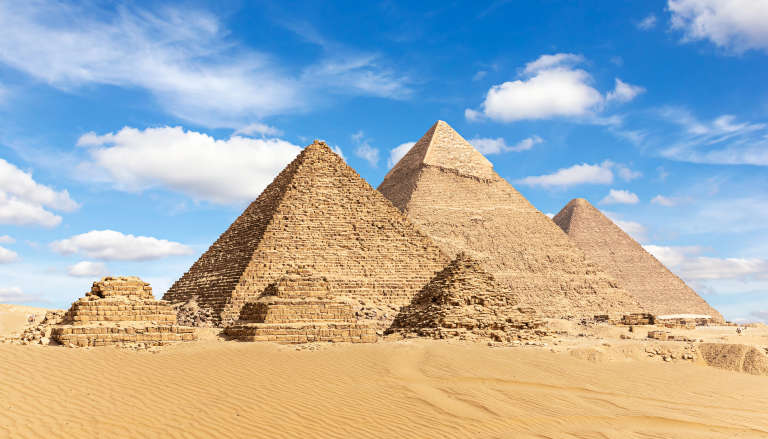
Sacred Geometry in Famous Architectural Structures
Throughout the ages, the divine principles of sacred geometry have inspired architects to create structures that resonate with the harmony and beauty of the cosmos.
Incorporating the timeless wisdom of sacred geometry into their designs, these architects aimed to evoke a sense of spiritual transcendence and connect with universal forces shaping our reality.
The Great Pyramid of Giza – This ancient wonder, a testament to the profound wisdom of the ancient Egyptians, incorporates the Golden Ratio and the Fibonacci sequence, embodying the harmonious principles that govern the cosmos.
The Parthenon – An iconic temple from Ancient Greece, the Parthenon is renowned for its exquisite proportions, which follow the Golden Ratio, reflecting the ideal of beauty and harmony that imbued Greek art and architecture.
Chartres Cathedral – The breathtaking Gothic architecture of Chartres Cathedral, with its intricate rose windows and soaring vaults, exemplifies the power of sacred geometry to evoke a sense of spiritual awe and divine mystery.
Taj Mahal – This mesmerizing mausoleum, a masterpiece of Islamic architecture, incorporates geometric patterns and symmetrical designs that embody the principles of sacred geometry, symbolizing the divine love and unity that pervade the universe.
The Barcelona Pavilion – Designed by the visionary architect Ludwig Mies van der Rohe, the Barcelona Pavilion showcases the elegant simplicity of the Golden Ratio, reflecting the harmonious balance between form and function that characterizes modernist architecture.
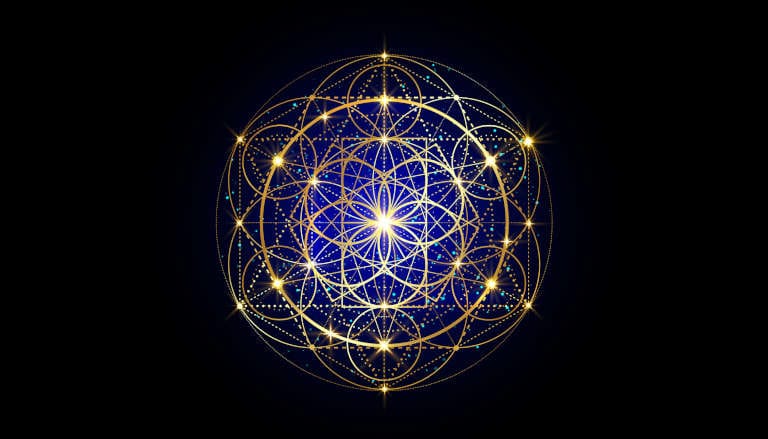
Impact of Designs on Human Perception & Experience
The presence of sacred geometry in art and architecture holds profound implications for human perception and experience.
By embodying the divine harmony that fills the cosmos, these designs resonate with the deepest aspects of our being, allowing us to connect with the universal forces that shape our reality.
The impact of these designs on our perception and experience can manifest as:
Inspiration and Creativity – The captivating patterns and intricate details of sacred geometry can ignite our imagination, inspiring us to express our own unique vision of beauty and harmony through artistic and architectural endeavors.
Meditation and Contemplation – The mesmerizing forms of sacred geometry can serve as powerful tools for meditation and contemplation, helping us to quiet the mind, focus our awareness, and connect with the divine wisdom that resides within our hearts.
Healing and Transformation – The harmonious vibrations of sacred geometry can promote healing and transformation on physical, emotional, mental, and spiritual levels, helping us to release energetic blockages, restore balance, and awaken to our true potential.
Unity and Interconnectedness – The universal language of sacred geometry reminds us of the intrinsic unity and interconnectedness of all existence, fostering a sense of compassion, empathy, and oneness with all living beings and the natural world.

Sacred Geometry in Spirituality & Religion
Common Symbols & Patterns
Throughout history, sacred geometry has been a cornerstone of spirituality and religious expression.
Its intricate patterns and symbols have captivated the hearts and minds of seekers on the path to enlightenment.
Spiritual and religious traditions worldwide have embraced these geometric designs, recognizing their connection to the divine order and the profound wisdom that resonates within them.
These sacred patterns serve as a bridge between the physical and metaphysical realms, allowing us to experience the divine harmony that permeates the universe.
Some common symbols found in spiritual and religious traditions include:
The Sri Yantra – A powerful symbol in Hinduism and Tantric traditions, the Sri Yantra represents the interplay of cosmic energies, symbolizing the union of the divine masculine and feminine principles that give birth to creation.
The Tree of Life – This ancient symbol, revered in various spiritual and religious traditions such as Kabbalah, Christianity, and Buddhism, represents the interconnectedness of all life and the divine wisdom that fills our world.
The Star of David – A sacred symbol in Judaism, the Star of David embodies the principles of sacred geometry, reflecting the divine harmony and balance that underpin creation.
The Cross – A central symbol in Christianity, the Cross represents the divine sacrifice and love of Jesus Christ, and also holds geometric significance as an intersection of vertical and horizontal lines, symbolizing the connection between the earthly and heavenly realms.
The Dharma Wheel – A sacred symbol in Buddhism, the Dharma Wheel embodies the teachings of the Buddha, symbolizing the path to spiritual awakening and the interconnectedness of all existence.

Interpretations of Sacred Geometry in Various Belief Systems
The language of the universe whispers to us through the tapestry of creation, unfolding its mysteries in myriad forms and patterns.
In spirituality and religion, we find that diverse belief systems have interpreted sacred geometry in unique ways, allowing us to glimpse at the interconnected nature of reality through different lenses:
Hinduism and Tantric Traditions – The intricate patterns of sacred geometry are woven into the fabric of Hindu cosmology and tantric practices. The Sri Yantra, for example, represents the union of Shiva and Shakti, the cosmic dance of creation and dissolution that gives rise to the manifest universe.
Kabbalah and Jewish Mysticism – Kabbalistic teachings emphasize the role of sacred geometry in understanding the divine blueprint of creation. The Tree of Life, a central symbol in Kabbalah, represents the ten emanations or sefirot through which the infinite light of the divine manifests in the finite world.
Christianity – The sacred geometry found in Christian art and architecture reflects the divine harmony and order that permeate creation. The Cross, a central symbol in Christianity, not only represents the crucifixion of Jesus but also symbolizes the axis that connects the earthly and heavenly realms.
Buddhism – Sacred geometry plays a significant role in Buddhist symbolism and cosmology. The Dharma Wheel, for example, represents the Buddha’s teachings and the path to enlightenment, with its eight spokes symbolizing the Noble Eightfold Path.
Islamic Art and Architecture – Islamic art is rich in geometric patterns that reflect the divine order and harmony of creation. These patterns, often composed of intricate tessellations and interlacing shapes, serve as a visual expression of the unity and interconnectedness of all things.

Practical Applications of Sacred Geometry
How to Incorporate Sacred Geometry Into Daily Life
The exploration of sacred geometry leads us to the realization that these divine patterns and symbols are not merely theoretical concepts, but can be woven into the very fabric of our daily lives.
By integrating sacred geometry into our routines, we can deepen our connection with the cosmos and nurture our spiritual growth.
Here are some ways to incorporate sacred geometry into your everyday life:
Meditation – Contemplating sacred geometry symbols during meditation can help you access deeper states of consciousness, fostering a sense of unity with the cosmos. You can focus on a specific symbol, such as the Flower of Life or the Sri Yantra, and visualize its patterns, allowing your mind to dissolve into the interconnectedness of all things.
Art – Creating artwork inspired by sacred geometry can be a powerful form of self-expression and spiritual exploration. As you draw, paint, or sculpt these intricate patterns, you are participating in the divine act of creation, aligning yourself with the cosmic harmony that underlies all existence.
Design – Incorporating sacred geometry into the design of your living spaces can help create an environment that supports your spiritual well-being. From the layout of furniture to the choice of decorative elements, you can integrate geometric patterns that evoke a sense of balance, harmony, and interconnectedness.
Personal Growth – Studying and exploring sacred geometry can be a transformative tool for personal growth and self-discovery. As you delve into the depths of these ancient symbols and patterns, you are likely to gain insights into the nature of reality, your place in the cosmos, and your own spiritual journey.
Healing – Some practitioners believe that sacred geometry can be used for healing purposes, working with energy fields and vibrational frequencies to restore balance and harmony within the body, mind, and spirit.
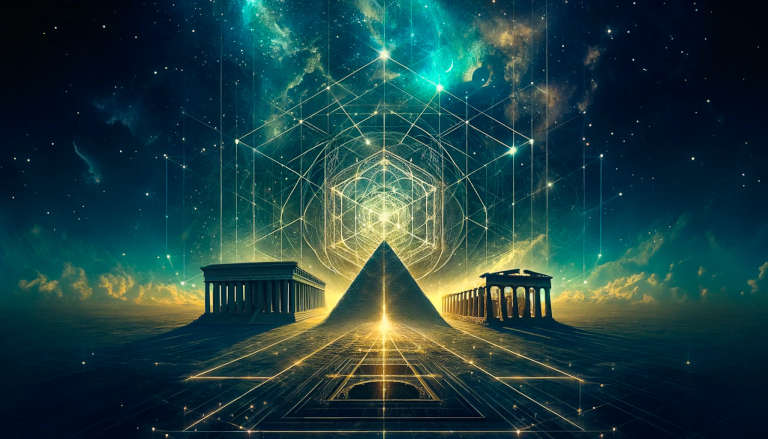
Benefits of Integrating Sacred Geometry Into Life
Incorporating sacred geometry into our personal practices offers us a multitude of benefits that enhance our spiritual growth, brings us into alignment, and improves our overall well-being, unlocking the door to a more profound and fulfilling existence.
Enhanced Awareness – Delving into sacred geometry can heighten our consciousness, sharpening our awareness of the interconnected nature of reality and deepening our understanding of the cosmos. This heightened awareness can facilitate personal growth and self-discovery.
Inner Peace – Attuning ourselves to the harmonious vibrations of sacred geometry, allows us to foster a sense of inner peace and balance within our lives. This inner tranquility can lead to improved mental and emotional well-being.
Spiritual Growth – Engaging with sacred geometry can serve as a catalyst for spiritual growth, guiding us on our path towards self-realization and enlightenment. As we explore the sacred patterns and symbols, we strengthen our connection to the divine and our own higher selves.
Creative Inspiration – Sacred geometry can provide us with a rich source of creative inspiration, fueling our artistic pursuits and enhancing our self-expression. Through art, we can celebrate the beauty of the cosmos and deepen our connection to the underlying harmony of existence.
Healing and Transformation – Some practitioners believe that sacred geometry can be used for healing and transformation, working with energy fields and vibrational frequencies to restore balance and harmony within the body, mind, and spirit. By integrating sacred geometry into our personal practices, we can tap into this potential for healing and transformation.
Empower Our Collective Journey
We understand the yearning for balance, purpose, and deep-rooted well-being. Together we can make a difference, and create a sanctuary where these aspirations inspire mindful living. Your support magnifies our shared impact. Gratitude for journeying with us.
Final Thoughts
In the boundless cosmos, our hearts resonate with the harmonious melodies of sacred geometry, inviting us to explore our inner universe.
These divine patterns whisper the secrets of creation, revealing the interconnected threads of a cosmic tapestry that stretches beyond the limits of time and space.
As we embrace this profound realization, we transcend our individuality, blossoming like a lotus in the eternal garden of existence.
Guided by the wisdom of sacred geometry, let us journey together into the heart of the cosmos, unveiling the radiant beauty of our true nature and creating a world imbued with the splendor of the stars, the harmony of the spheres, and the eternal love that binds us all.
Spread the Wisdom & Enlighten a Friend’s Journey
You May Also Like:
